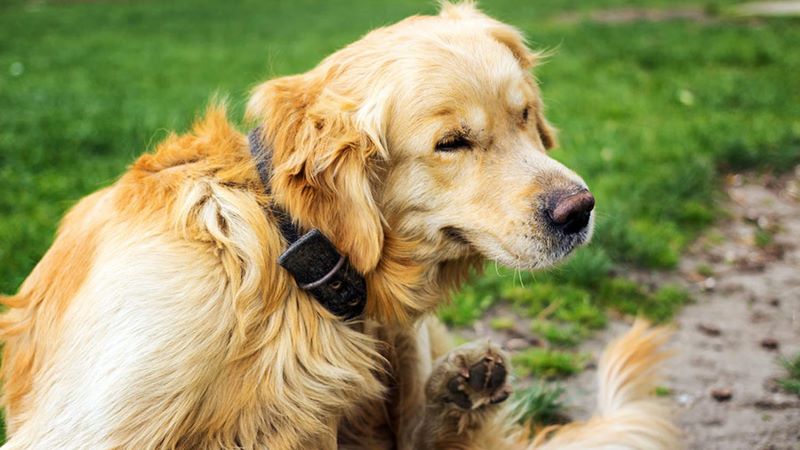Struggling with hot spots? No, I am not talking about your inability to get on the internet or find a cool place to hang out with friends. In all seriousness, if you’ve had any experience with hot spots, you know they can be difficult to get rid of and painful for your dog.
After she suffered hot spots, or summer sores, my parents began giving their very fluffy Golden Retriever a “Puppy Cut” in the summer months. A shorter haircut keeps Lily cooler and thins out her coat. Her thinner coat traps less moisture. Hot spots can be a result of moisture on the fur that leads to damp skin underneath. When the skin remains damp it becomes a breeding ground for bacteria and can result in hot spots.
What exactly are hot spots?
The technical name for hot spots is acute moist dermatitis, which is exactly what it sounds like. A hot spot is an irritation of the skin caused by a flea bite, cut, or allergen. Nancy Kay, D.V.M, explains these itchy spots in the feature, The Vets Will See You Now in the June 2016 issue of Real Simple magazine. According to Kay, “When a dog scratches, licks, or chews the itchy area, it creates a moist environment that causes the hot spots to form.” They are common in the summer, hence their other name, summer sores.
How can I avoid hot spots?
It is important to keep your dog well groomed, especially in the summer months. If your dog has particularly thick fur, giving him a puppy cut or shaving him in the summer is a good idea. Keep any area that does not dry easily clipped short (the ears tend to be popular areas for hot spots). Don’t ignore any sore or lesion that doesn’t get better within a day or two. PetMD’s article How to Treat Hot Spots on Dogs warns, “Even a slightly oozing sore can provide enough moisture and/or nutrient for a bacterial infection to take hold.”
My dog has hot spots. What do I do?
If you have caught the hot spots early, you can treat them at home. In The Vets Will See You Now, Veterinarian Ann Hohenhaus recommends dabbing the areas with a gauze pad dipped in a mixture of 1 drop of baby shampoo and 1 cup of water. Rinse with warm water and air-dry. Trimming or shaving the area can also help, as exposing the spot to air will dry it out and speed up healing. If the hot spots do not clear up easily, your dog may need to see a veterinarian, who will prescribe a topical cream, or in some instances, oral antibiotics.
Paying attention to any sores and clipping your dog’s thick fur short can help avoid hot spots during the steamy summer months. But, if you notice him biting or chewing at his fur, make sure to investigate, because the sooner you check it out, the better.

